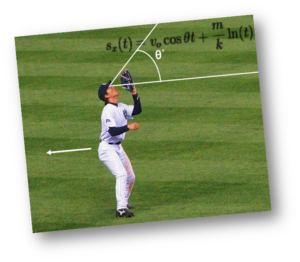Have you ever wondered how you catch a ball?
The advanced calculus required to plot its trajectory and move your hands to the right spot is mind-boggling.

Yet we do it effortlessly, even from a young age. Or do we?
The truth is, we’re not doing complex math in our heads. Instead, we rely on a mental shortcut called the “Gaze Heuristic.”
Rather than calculating angles and speeds, we sight the moving ball and move our bodies so as to keep the angle of gaze constant.
Clever eh! Very useful.
You see that’s the thing with heuristics and biases — they’re neither inherently good nor bad.
These evolved mental shortcuts allow us to make decisions faster and more efficiently, and they’ve kept us alive for hundreds of thousands of years.
But what happens when these shortcuts lead us astray?
Heuristics are powerful tools, but unchecked, they can result in “lazy” decision-making.
In today’s world, this can mean missed opportunities and even unintended harm. So how do we get the benefits without falling prey to the pitfalls?
Let’s take a closer look.
“We are not thinking machines that feel; rather, we are feeling machines that think.”
Antonio Damasio
Collective Bias: None of us is as dumb as all of us!
We all have biases, but something curious happens when we come together in groups. Instead of these biases being mitigated or cancelling each other out, they often become amplified — especially if someone in the room has a dominant personality.
You’ve likely heard of the phenomenon of “groupthink”, where an idea gains quick acceptance with a majority, often because it aligns with everyone’s unconscious biases.

Imagine you’re in a boardroom, tasked with addressing gender diversity in leadership. Someone suggests quotas and KPIs — a familiar response. Within seconds, others nod in agreement.
Decision made and the meeting moves forward.
But is that really the best solution? It might be the most convenient or most familiar one, but that doesn’t make it effective.
This is a classic heuristic response. A quick, efficient but lazy choice. Potentially suboptimal or even downright dangerous.
“Knowing yourself is the beginning of all wisdom.”
Aristotle
Can We Eliminate Bias? Never! … but we can manage it
Biases are a part of being human and while awareness is a good start, it’s not a cure-all. Many organisations offer bias awareness training but the truth is, these unconscious biases tend to slip back into the background, operating beneath the radar. That’s why they’re called “unconscious” biases!
So what can leaders do?
The key lies in recognising and challenging our automatic responses. The first idea that comes to mind is often a heuristic, shaped by experience, culture and unconscious beliefs.
Rather than settling there, try this: push yourself and your team to come up with at least another half a dozen different approaches.
Yes, it’s hard work, but this process can uncover innovative solutions that a quick, heuristic answer would miss.
This is where true leadership shines. This is where great ideas live.
Fancy a Challenge? Test Your Own Biases
If you’re feeling brave, consider exploring your own biases with Project Implicit, a research initiative by Harvard University.
Through affective priming Project Implicit offers various tests to reveal implicit biases in a totally foolproof way.
Start with the Gender-Career test and see if your automatic responses align with your conscious beliefs. It might just surprise you.
Curious to Go Deeper?
If generating alternative solutions for gender diversity felt challenging — or if you’d like to understand how to enhance decision-making by navigating biases and heuristics — FPC can help.
Our Culture Mechanics offer expert guidance to improve awareness, foster better decision-making and help you lead with clarity and courage.
